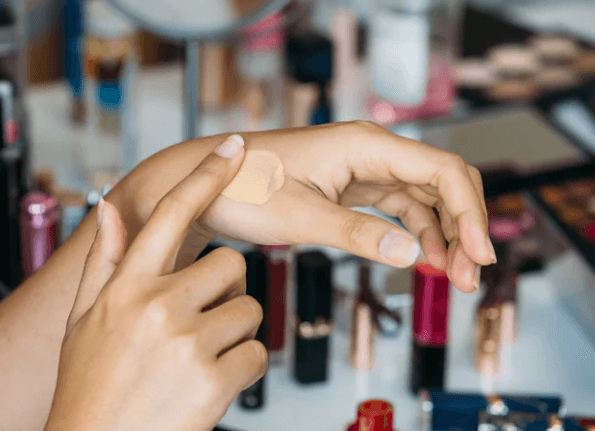Understanding Consumer Behavior in Beauty
In the dynamic world of beauty, understanding consumer behavior is pivotal. It involves dissecting the elements that sway buying choices, which range from emotional influences and personal identity to the general impact of marketing strategies. As societal norms shift and evolve, so too do consumer preferences, making it essential for brands to remain agile and responsive to these changes.
This understanding guides companies in creating tailored offerings that resonate deeply with their audience. In processes such as makeup testing, a keen insight into consumer preferences allows for a more targeted approach, ensuring that products not only meet but exceed expectations. By aligning product development with consumer insights, brands can maintain relevancy and enhance their market appeal.
The wealth of information found in resources like Psychology Today’s comprehensive look at consumer behavior can enrich our understanding of these psychological drivers, crafting a robust framework for effective product development.
Steps in Beauty Product Testing
Beauty product testing is not merely a series of trials but a strategic roadmap designed to ensure the product’s success in the market. It begins with consumer surveys — a vital diagnostic tool that captures the initial pulse of market needs and desires. These surveys help isolate key features that consumers seek, such as non-toxic ingredients, efficacy, and the allure of eco-friendly packaging.
The results inform the next stage: clinical trials. Here, products are scrutinized under scientific conditions to substantiate claims around effectiveness and safety. Clinical trials often involve dermatologists and other skincare experts to provide authoritative assessments, ensuring that the product delivers on promised benefits without adverse effects.
Finally, in-home usage testing comes into play. This phase provides real-world user feedback that is unfiltered and invaluable. Consumers test the products in their daily routines, offering insights into user experience, product texture, scent, and any noticeable skin benefits. This feedback loop not only confirms the product’s market readiness but also highlights areas for potential refinement.
The Role of Data in Product Development
Data is a critical asset in the beauty industry, serving as a compass that guides new product development. With the abundance of data available from testing stages, brands can make informed decisions about ingredient choices, formulation tweaks, and even branding strategies.
When brands tap into advanced analytics to interpret consumer feedback, they can unearth insights that drive product innovation. For instance, trends toward sustainable ingredients and ethical sourcing have prompted many brands to reformulate products, aligning with consumer preferences for environmental responsibility.
The Harvard Business Review emphasizes the transformative potential of data, underscoring its power to refine product offerings to meet ever-changing market demands while fostering continuous advancement and personalization.
Real-Life Examples of Successful Testing
Success stories in product testing highlight the significance of marrying consumer insights with brand innovation. Consider the rise of skincare brands that have excelled by using consumer feedback to champion the ‘clean beauty’ trend. By embracing naturally sourced ingredients, brands like these capitalize on an ever-growing consumer demand for transparency and health consciousness.
Another example is the surge in the demand for inclusive makeup ranges. Brands that have listened to consumer voices advocating for diversity have broadened their foundation shades and formulas to cater to individuals from all walks of life, garnering both public praise and heightened market share.
This dedication to consumer-driven development not only translates into successful product launches but fosters lasting consumer relationships, establishing brand loyalty and trust.
Challenges in Meeting Consumer Expectations
In a competitive industry such as beauty, meeting the myriad of consumer expectations is fraught with challenges. Diversity in consumer needs, influenced by factors such as cultural backgrounds, personal values, and individual skin concerns, creates a complex landscape for brands to navigate.
Brands must grapple with these variables while striving to deliver universally appealing yet individualized products. This often requires a balance between mass appeal and personalized solutions, a daunting task given the heterogeneity of beauty consumers worldwide.
Innovative brands are increasingly turning to customization services, where consumers can tailor products to their specific needs, thereby providing unique, personal experiences that bridge the gap between standard offerings and individual requirements.
Future Trends in Beauty Product Testing
The future of beauty product testing is set against a backdrop of technological innovation. Cutting-edge technologies such as artificial intelligence and machine learning are paving the way for breakthroughs in how beauty products are developed and tested.
The use of virtual try-ons and AI-driven skin analysis tools is becoming more prevalent, enabling brands to effortlessly capture detailed consumer data. This allows for hyper-personalization, where products are crafted not just based on generalized data but tailored to individual skin types and preferences with precision previously unimaginable.
As brands continue to harness these innovations, the result is a beauty industry that is more responsive, inclusive, and capable of delivering products that truly resonate on a personal level.



